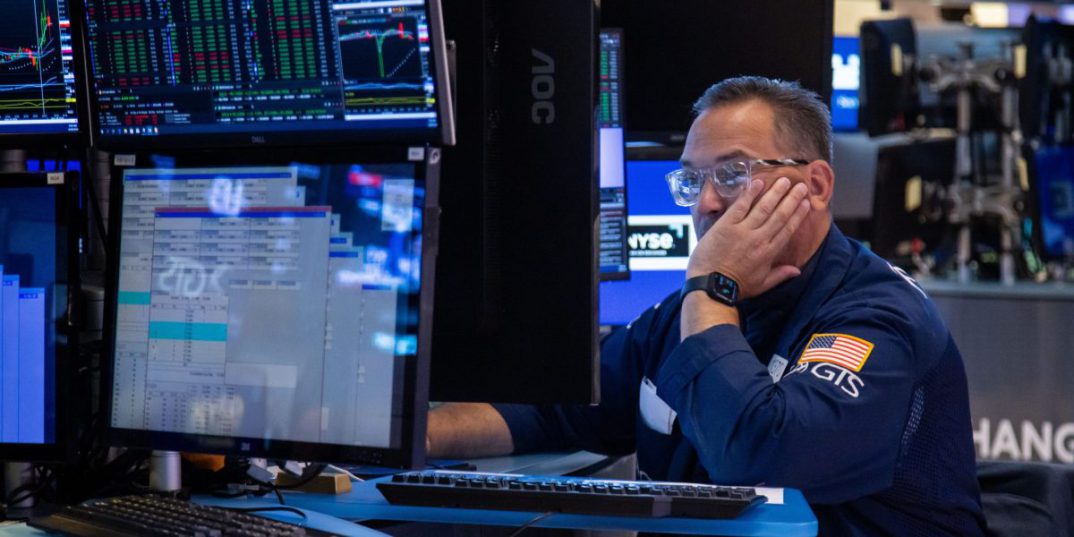There’s no avoiding the hype surrounding AI these days. Promises of new developments like personal robot assistants and miracle cancer cures are ubiquitous as executives take every opportunity to emphasize their AI chops to enthusiastic investors—and slightly less enthusiastic consumers.
Not everyone has been blown away by the AI fanfare, however. James Ferguson, founding partner of the UK-based macroeconomic research firm MacroStrategy Partnership, fears investors’ AI exuberance has created a concentrated market bubble that’s reminiscent of the dot-com era.
“These historically end badly,” Ferguson told Bloomberg’s Merryn Somerset Webb in the latest episode of the Merryn Talks Money podcast. “So anyone who’s sort of a bit long in the tooth and has seen this sort of thing before is tempted to believe it’ll end badly.”
The veteran analyst argued that hallucinations—large language models’ (LLMs) tendency to invent facts, sources, and more—may prove a more intractable problem than initially anticipated, leading AI to have far fewer viable applications.
“AI still remains, I would argue, completely unproven. And fake it till you make it may work in Silicon Valley, but for the rest of us, I think once bitten twice shy may be more appropriate for AI,” he said. “If AI cannot be trusted…then AI is effectively, in my mind, useless.”
Ferguson also noted AI may end up being too “energy hungry” to be a cost effective tool for many businesses. To his point, a recent study from the Amsterdam School of Business and Economics found that AI applications alone could use as much power as the Netherlands by 2027.
“Forget Nvidia charging more and more and more for its chips, you also have to pay more and more and more to run those chips on your servers. And therefore you end up with something that is very expensive and has yet to prove anywhere really, outside of some narrow applications, that it’s paying for this,” he said.
For investors, particularly those leaning into the AI enthusiasm, Ferguson warned that the excessive tech hype based on questionable promises is very similar to the period before the dot-com crash. He noted that during both of these periods, market returns were concentrated in tech stocks that traded based on Wall Street’s sky-high earnings growth estimates.
But despite those lofty forecasts, the dominant hardware giants of the dot-com era, Cisco and Intel, have largely disappointed investors ever since. Ferguson argued today’s AI hardware hero, Nvidia, might experience a similar fate, particularly given its elevated valuation.
“What multiple of sales is Nvidia a good deal on if you think that it might only have—no matter how stratospheric the growth rate at the moment—if you think that it’s probably not going to be a player in a decade’s time?” he asked, implying Nvidia might not be worth the current price tag of nearly 40 times sales investors are paying.
Despite his argument that AI-linked tech stocks like Nvidia are highly overvalued, Ferguson admitted that no one can predict when a bubble will end. This dynamic leads many bearish investors to feel “compelled to play” in the markets even when stocks look pricey, according to the analyst—and that’s a great way to get hurt.
“I mean, it’s certainly what was happening in the dotcom [bubble], for example, where almost anybody who wasn’t a retail punter was looking at these things and saying, ‘well, it can’t last, but having said that, if it lasts one more quarter and I’m not playing, I’ll lose my job,’” he explained.
The good news, according to Ferguson, is that because the current stock market bubble is so concentrated in AI-linked stocks, there is still value out there.
Of course, there will be widespread pain for investors if the AI bubble bursts. But after that, Ferguson recommended looking at the currently unloved U.S. small-cap stocks, which may benefit from interest rate cuts and aren’t highly valued.
“There’s a lot of value to be found in the U.S. The trouble is that that value is to be found in good old fashioned ways, trawling through small caps and looking for businesses that are growing in a good old fashioned, steady way,” he said.
Subscribe to the CEO Daily newsletter to get global CEO perspectives on the biggest stories in business. Sign up for free.
Originally Appeared Here





